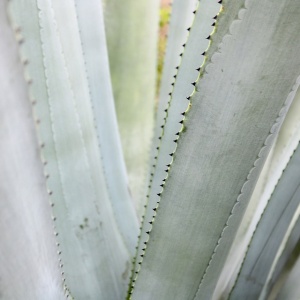
This paper by FCRN member Daniel Tan finds that bioethanol derived from agave grown in semi-arid areas of Australia could have lower environmental impacts than biofuels derived from US corn and Brazilian sugarcane. Agave is widely grown in Mexico to make the alcoholic drink tequila.
The life cycle assessment used 17 impact categories. Agave has lower impacts than both corn and sugarcane in 11 of these categories, including global warming, eutrophication and water consumption (see Figure 5 of the paper).
Agave uses almost twice as much land per unit of bioethanol produced as does corn, and a similar amount to sugarcane. However, as the authors point out, agave can be grown on arid land that is not suitable for food crops, thus avoiding feed-food competition.
Abstract
The aim of this study was to conduct the first comprehensive life cycle assessment and economic analysis on ethanol produced from agave. Compositional and field data from a field experiment in Queensland, Australia was used. Our study shows that ethanol yields from agave (7414 L/ha/year) are comparable to Brazilian sugarcane (9900/L/ha/year) and higher than US corn ethanol (3800/L/ha/year). Furthermore, agave outperforms current first generation biofuel crops in water-related impacts, including Freshwater Eutrophication (96% lower than corn and 88% lower than sugarcane), Marine Ecotoxicity (59% lower than corn and 53% lower than sugarcane) and Water Consumption (46% lower than corn and 69% lower than sugarcane). The life cycle fossil energy use (Fossil Resource Scarcity) for agave is 58% lower than corn and 6% higher than sugarcane. The Global Warming impact for agave is also 62% and 30% lower than that of corn and sugarcane, respectively. Although its Land Use impact, measured by land occupied per unit ethanol output, is 98% higher than corn and 2% higher than sugarcane, agave can be grown on arid land that is not suitable for food crops. The economic analysis suggests that first generation ethanol production from agave is not commercially viable without government support. Overall, the results show that agave is promising for biofuel production in the water-energy-food-environment context.
Reference
Yan, X., Corbin, K.R., Burton, R.A. and Tan, D.K., 2020. Agave: A promising feedstock for biofuels in the water-energy-food-environment (WEFE) nexus. Journal of Cleaner Production, p.121283.
Read the full paper here and read a press release here. See also the Foodsource Building Block What is feed-food competition?







Post a new comment »